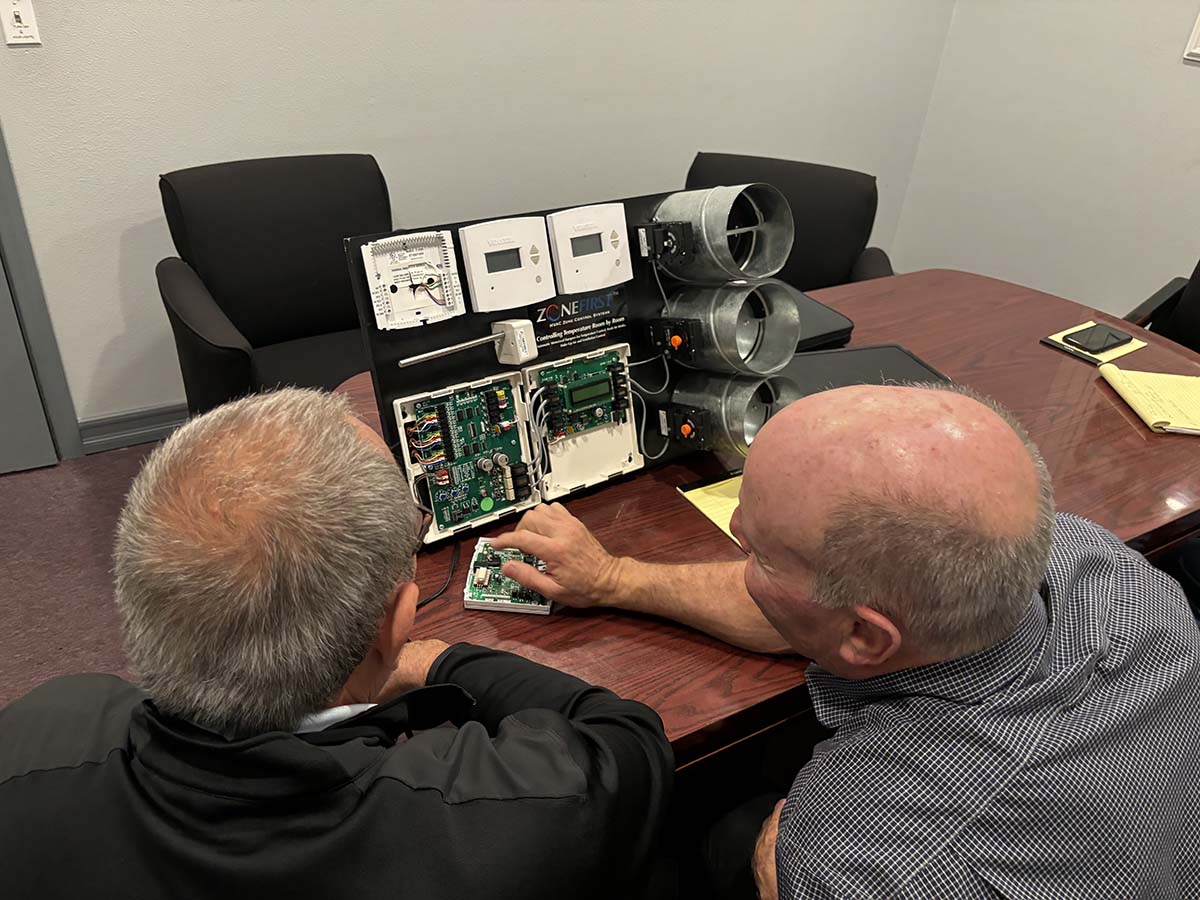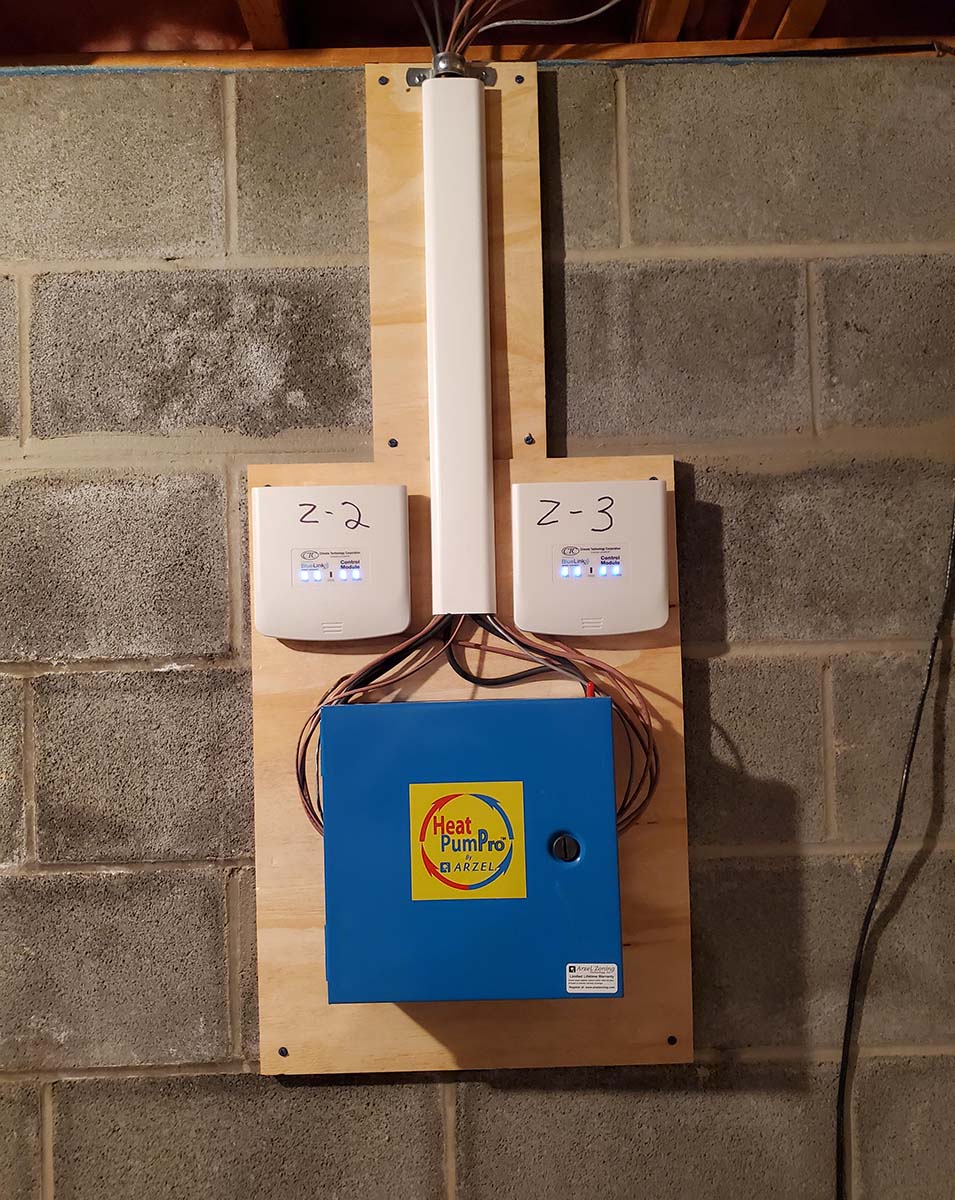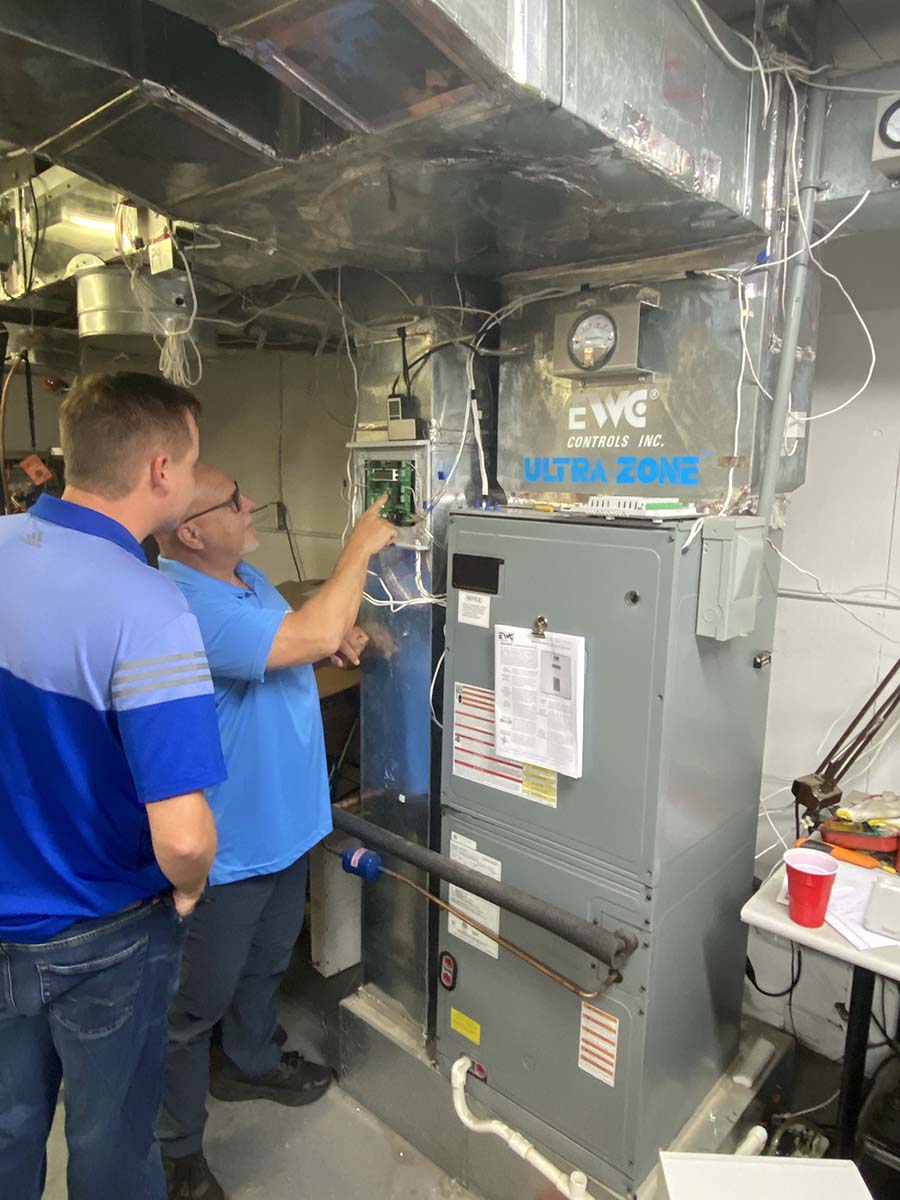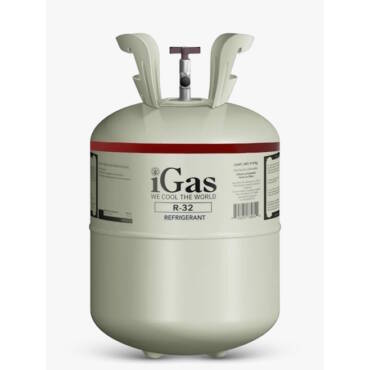✕
For many HVAC contractors, zoning is an untapped market. Many homeowners probably don’t even know what zoning is, even if they already have zoning systems installed in their homes. (Hint: It’s just not the HVAC system.) Homeowners, and many contractors, are often unaware that HVAC zoning can provide exactly what the former is looking for, and the latter is looking to provide: energy savings, and better comfort and control.
The market for zoning is relatively small compared to what those who do provide those services think it should be. That’s because they’ve been educated on the systems, and have experienced what they have to offer. So, for more HVAC contractors to sell zoning, they have to understand the benefits, challenges, how to approach customers to sell it in the first place — and then comes the install.
– Mike Reilly
president
EWC Controls
Benefits and Challenges
In order for contractors to successfully sell zoning systems, they first have to understand how it benefits them and their customers.

KNOWING ZONING: Contractors have to take their time learning zoning equipment to achieve a successful install. (Courtesy of ZoneFirst)
“There’s a cost-benefit for contractors, too,” said James Foster, sales and marketing manager at ZoneFirst. “We want to try to make sure that we’re educating these contractors, because they can actually improve their margins when using zoning. We’re using less equipment, so we’re taking less time.”
Dick Foster, president at ZoneFirst, said the benefits of zoning can be explained by something he coined that he likes to call “The Four Cs: comfort, conservation, convenience, and common sense.”
The one that seems to matter the most to homeowners is comfort.
“Think about today’s modern car: You have climate zones for driver’s side, passenger side, rear seats … and then think about the size of that car in comparison to a typical home that usually only has one thermostat to serve that entire space,” said Ken Barton, vice president of technical and sales at Arzel Zoning Technology Inc. “Zoning systems really allow you to create different comfort zones throughout the house.”
Some studies have shown that the HVAC systems are typically about 50% of a monthly utility bill, sometimes more. Zoning systems can not only reduce that for a homeowner, but can also save more energy. When more thermostats are added and more temperature control is achieved, there’s more conservation.
What a lot of homeowners don’t realize is they already have zoning systems in their homes that conserve energy and save money: their lighting and plumbing.

COMPLETE COMFORT: Zoning systems allow homeowners to create different comfort zones throughout the house, offering more control over comfort. (Courtesy of Arzel Zoning)
“[Homeowners] don’t have one light switch in the house that turns on every single light; they’ve got light switches in every single room … We don’t have one water faucet that turns on every single spigot in the house, so those are not as expensive to operate,” said Mike Reilly, president of EWC Controls.
Leaving a 100-watt light bulb on all month long likely isn’t going to cost that much, Reilly said. Leaving the a/c running for that same amount of time, however, runs up the bill like crazy. Zoning allows homeowners to heat and cool their house in sections, addressing only the zones that need it, ultimately conserving energy and cutting costs.
“When you think about it, why would you heat or cool the whole house when you’re only in one room?” said the elder Foster.
Heat rises, so upstairs rooms are often too hot, while downstairs rooms are too cold. Since zoning offers additional, more precise thermostats, controlling the temperature just got a lot more convenient for homeowners.
“If I can turn the lights on and off in my bedroom, why do I have to go all the way downstairs to the dining room hallway, or wherever that one thermostat is, to control my heating and cooling?” the elder Foster said. “That central location is usually in the middle of the house, next to a big return. So it could be 60°F on one side of the house, and 80°F on the other, and when those two temperatures come together in the middle, where the thermostat is, it says 70°F. Therefore, the thermostat doesn’t do anything.”
How to Sell
When a contractor goes into a house, it’s usually for one of two reasons: There’s a problem that needs to be fixed, or they are going to try to sell a new system, according to the elder Foster.
Once contractors understand what zoning systems can offer homeowners, they have to address each specific homeowner’s needs. They also have to know what point to hit on, and how to explain zoning systems in a way that homeowners understand.
What might be useful is offering customers some sort of demonstration.
“We’ve developed tools for our contractors like an explainer video that’s dedicated externally to homeowners,” Barton said. “We have our contractor site … but we also have a site that is dedicated to really just trying to educate homeowners on things like what zoning is, how it impacts their house, and what the installation looks like.”
Really, the biggest thing a contractor has to do to sell zoning is start a conversation.
The younger Foster said that during one ZoneFirst training session, a technician had a great idea about how to start a conversation with a homeowner regarding a potential zoning system, which he called the “Golden Ticket Rule,” and involved a series of questions.
“Those questions were: ‘If I could talk to you about how to conserve energy, or if I could tell you how you can be more comfortable in your house, or if I could tell you how you could extend the lifetime of your [HVAC] equipment, would you like me to talk to you about those things?’” the younger Foster said.
Telling customers about their alternatives might be a little time-consuming, and it might take a little extra effort from a contractor, but broaching the topic of a new zoning install —even when it seems like there is no time to do so — is easier when a contractor knows how to do so.
“It’s those simple questions that can be asked by the techs when they’re in the house that could really make zoning (which we think should be) a much larger part of the market,” the younger Foster said.
Introducing technicians themselves to zoning systems is another thing that needs the right approach. After all, they are the ones installing and ultimately selling it.

TECH TIP: When it comes to installing a zoning system, it’s important for technicians not to overcomplicate it. (Courtesy of EWC Controls)
“We tell all of the dealers that we talk to that we’re not introducing anything that they don’t already know,” Reilly said. “So the basic tip for us is: Don’t overcomplicate it, don’t overthink it. It’s a very simple system that you’re already familiar with; the industry standards are the same. It’s just a couple of additional wires that are going to increase the homeowner’s comfort and energy saving.”
Another approach is to have zoning equipment installed in the technician’s homes themselves — maybe even doing it for free.
“Some of them become your biggest fans and supports of [zoning] systems, because once they have it in their home, and they see how it work, and they’ve gone through the process … it changes how they talk to their customers,” Barton said.
Oftentimes, those technicians go from questions why zoning systems even exist, to, basically, “How did I ever live without this?”
“And that speaks volumes to their customer, because if your contractor installed this very [zoning] system in their own home, it must be good, right?” Barton said.
Install Tips
The first step to a successful zoning installation is, obviously, selling it to the homeowner. After that, the install should be pretty simple. What that zoning system is doing is taking that one thermostat and wiring it into the zone panel, and then from the zone panel, wiring it to the air handler, Reilly said.
The biggest challenge that comes along with zoning has to do with how the house was constructed — or, more specifically, what kind of ductwork it’s working with and how accessible it is.
“If the ductwork is accessible in the basement, rather than in the attic where everything is these days, zoning is very easy to install,” the elder Foster said. “So it really comes down to the existing home, how easy is the ductwork to get at, and then how easy it is to service that wire.”
“In an area where the ductwork is concealed, it can be challenging to install a zoning system,” Barton said. “Here at Arzel, we do have some products specifically designed for inaccessible ductwork. While there is not a solution 100% of the time, it does open up a lot of opportunities for contractors.”
If the circumstances are not ideal for a zoning system install, a contractor could at that point decide to walk away from the job. However, while there are challenges to zoning systems, there are always ways to educate contractors and homeowners on how to overcome them.
“The biggest challenge is the airflow … In a retrofit application, that duct system already present in the home may not lend itself to easily to be zoned, but there are ways that we can educate the [contractor] on how to go in on retrofit application, and modify that ductwork to accommodate the zoning system,” Barton said.
Whether you require installation, repair, or maintenance, our technicians will assist you with top-quality service at any time of the day or night. Take comfort in knowing your indoor air quality is the best it can be with MOE heating & cooling services Ontario's solution for heating, air conditioning, and ventilation that’s cooler than the rest.
Contact us to schedule a visit. Our qualified team of technicians, are always ready to help you and guide you for heating and cooling issues. Weather you want to replace an old furnace or install a brand new air conditioner, we are here to help you. Our main office is at Kitchener but we can service most of Ontario's cities
Source link


Add Comment